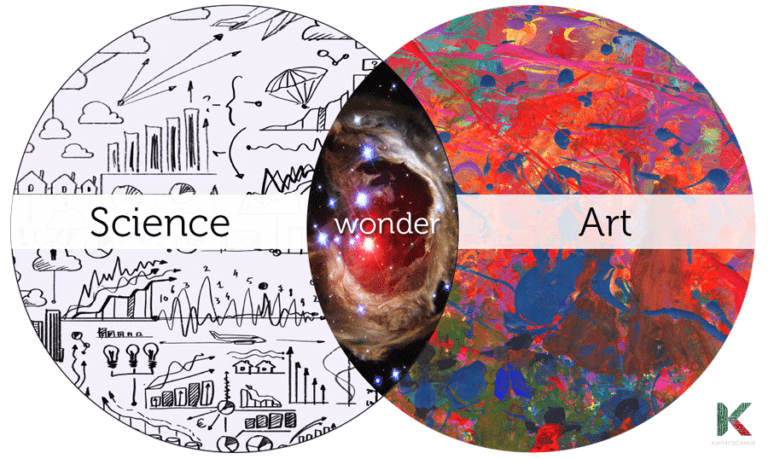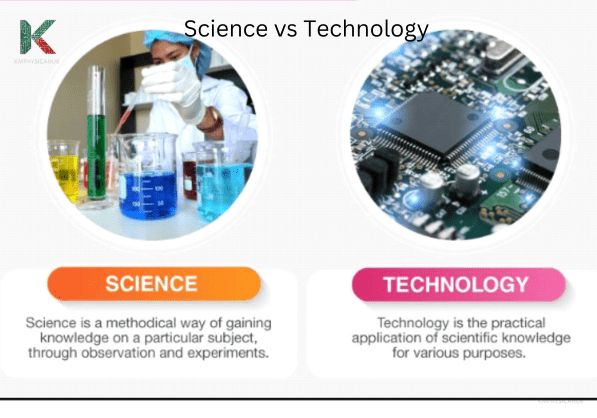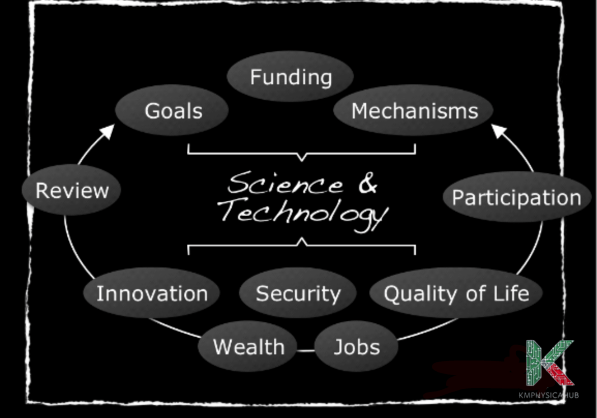Bridging the Gap: Connecting Science to Art, Engineering, and Technology
It is quite astonishing how art, science, engineering and technology do interrelate and intertwine. All professions offer a set of perspectives and practices for perceiving and engaging with the world; when these fields intersect, they can produce spectacular advancements and discoveries.
- Science provides us with a very systematic way of understanding the environment within which we live by observing systematically, conducting experiments relating to the environment and formulating theories systematically. It serves as a foundation from which the technological advancements and the engineering solutions are derived.
- In contrast, art provides an opportunity to share people’s experience, to draw feelings and possible concepts that seem to be impossible to explain with the help of words and calculating instruments. It also motivates creativity and in most cases sparks scientific and technological advancement.
- Engineering is the practical application of science, mathematics, and technology to produce new designs, assemble physical structures, devise machines and other things like bridges, roads, vehicles, buildings etc. In practical use, it is an association between theoretical science and practice or the application of converting ideas into physical entities.
- Technology refers to the application of tools such as instruments, devices, and machines in addressing certain troubles or in accomplishing certain tasks. It can be defined as the actual application of science and engineering in meeting human needs and enhancing our lives.
Example of cooperation of science with art, engineering, and technology:
The synergy of these fields is evident in many aspects of daily life. For example, the design of a smartphone involves:
– Science to understand the materials and electronics inside it.
– Art to create an aesthetically pleasing and user-friendly interface.
– Engineering to construct the device’s hardware and software.
– Technology to make it functional and accessible to the masses.
This interdisciplinary methodology, commonly known as “STEAM” (Science, Technology, Arts, Engineering, and Mathematics), introduces novel perspectives to the essence of science in the modern age. It suggests that science and science learning are not complete without the arts and that new pedagogies from the arts can help close the gap between traditional school science and the rapidly advancing scientific field.
Connection of Everyday Science with Art:
The search for order and meaning in the world around us has taken different forms: One is science, another is art. Although the roots of these two go back thousands of years, the traditions of science are relatively recent. More importantly, the domains of science and art are different. Although they often overlap. Science is principally engaged with discovering and recording natural phenomena while the arts are concerned with personal interpretation and creative expression.


Art and science have similarities. In literature, we explore human experiences, learning about emotions from despair to love, even if we haven’t felt them ourselves. While the arts describe rather than provide these experiences, The arts do not necessarily give us those experiences, but they describe them to us and hint at what might be possible for us. Conversely, science reveals what is possible in the natural world, enabling us to foresee natural occurrences even before they happen. It helps us connect various phenomena, see relationships between and among them, and understand the complexities of nature.

Scientific inquiry broadens our comprehension of the natural environment. Awareness and insights from both the arts and sciences deepen our perspective on life and shape personal and societal decisions. A person with a comprehensive education has proficiency in both domains.
Example of science-art connection:
A fascinating example of the intersection between science and art in the field of physics can be seen in the work of “physicist and artist Yunchul Kim”. His projects often explore physical phenomena through artistic installations, creating a dialogue between the two disciplines.
One of the significant pieces by Kim is “Chroma”, which is a 15-meter-long structure made from laminated polymer, shaped like a torus knot (Kim, 2020). This work illustrates hydrodynamic movement utilizing magnetic fields to generate distinctive patterns of dispersed nanoparticles within a fluid. The installation visually represents a scientific principle while also encouraging observers to explore physics through a novel and creative perspective.
Kim’s collaboration with scientists at the Leibniz Institute for Astrophysics Potsdam is another example. His interest in dark energy and dark matter influenced his artistic approach to fluidity in his work. This brought about a conference and an exhibition in the year 2012 that demonstrated how the public could be encouraged to embrace arts as a way of developing an understanding of scientific concepts.
Further, Kim received a two months residency at CERN, the European particle physics laboratory; however, his goal was to impart his artistic intuition and also, to understand the atmosphere all the more. This exchange exemplifies the potential of the process in which scientists and artists are involved with extensive benefits for both sides and the combined improvement of public awareness of science.
These examples underscore how art serves as a vibrant medium to explore and explain the significant impacts of scientific endeavors. Blending physics with artistic creativity can convert scientific ideas into captivating pieces of art that not only challenge conventional views but also deepen the comprehension of the intricate nature of the physical world.
Connection of Everyday Science with Engineering:
The relationship between practical science and engineering lies in their shared objective of problem-solving and enhancing our daily lives. At its core, engineering is the practical implementation of scientific theories to conceive or construct structures, devices, or systems. It involves various specialized disciplines, including civil, mechanical, electrical, and chemical engineering, each applying scientific expertise in distinctive manners.
Here’s a detailed explanation of how science and engineering are connected in everyday life:
- Problem Identification: It all starts with identifying a problem or a need. This could be anything from the need for clean water to the desire for a more efficient smartphone.
- Scientific Principles: Engineers use scientific principles to understand the problem. For example, understanding the physics of water flow is essential for designing a water filtration system.
- Design and Development: Using this understanding, engineers design solutions. The design process involves creating models, prototypes, and simulations, often using computer-aided design (CAD) software.
- Testing and Refinement: The designs are then tested and refined. This might involve laboratory experiments or field trials, depending on the nature of the project.
- Implementation: Once a design is finalized, it is implemented. This could mean constructing a building, manufacturing a product, or installing a system.
- Maintenance and Improvement: After implementation, engineers are also involved in maintenance and continuous improvement, applying scientific knowledge to ensure that the solution remains effective and efficient.
Examples of science-engineering connection:
A practical example of this connection is the development of solar panels:
- Science: The ability to have a basic knowledge and comprehension of how photoelectric effect, the scientific process by which light can be converted to electricity.
- Engineering: The development of solar panels which are in essence mats or plates on which light or sunlight is captured and converted into useful electric energy.
Another example is the construction of bridges:
- Science: Applying physics in a manner where forces affecting the airplane are considered, materials science, where the best materials for the construction of the plane are found, and geology where the perfect foundation for an effective airplane is considered.
- Engineering: Deciding which components of the bridge should be able to take certain loads, choosing appropriate material that would be both hard wearing and cheap, and supervising the construction of the bridge to guarantee its stability and lifespan.
Such examples show that science is a source of information about the world, while engineers go a step further and use science to design and create new and better ways to do things that improve our standard of living. It is now impossible to look at interactions between science and engineering in terms of sheer numbers and the various modern miracles of technology and lifestyle.
The aspect of correlation of science and engineering, in the construction of bridges and, the creation of solar panels shows how scientific approaches are used to address real-world issues and come up with structures and gadgets that makes human existence fuller. Let’s delve into the details of each example:
Construction of Bridges:
Bridges building is a good illustration of the integration of science and engineering practices. Here’s how they are connected:
Scientific Principles: The principles of physics can be used to explain the loads that are experienced by the bridge for instance tension, compression, and shear. Material science assists in choosing the correct materials that can manage such forces and these conditions.

- Engineering Application: These scientific principles are used by civil engineers in order to come up with bridges that are safe, long lasting and efficient. Some of the requirements may include aspects such as how the load is going to be distributed over the bridge, the kind of materials to be used as well as how the bridge is going to be used.
- Innovation: Sustainable innovation may be attained where new material technologies are incorporated in bridge engineering, which may produce superior and economic structures like high-performance concrete or steel.
- Challenges: There are also problems of seismology, wind loads, and hydrostatic and hydrodynamic pressures which engineers also have to consider, particularly in regions that are vulnerable to disastrous events.
- Aesthetics and Functionality: When it comes to creating a bridge, the process is not just about building transport infrastructure but also about how it looks. Indeed, we are used to seeing a bridge more as an engineering marvel rather than art but in fact, it is an amazing example of bridge art.


- Electrical Systems: Power electronics engineers are involved in the design of the electrical aspects of a solar panel specifically in generation, conversion efficiency and system safety.
- Environmental Considerations: Environmental engineers work to evaluate the environmental cost of solar panel production and disposal, with the intent of making the process as environmentally friendly as possible through the panel’s lifespan.
- Durability and Reliability: Engineers are tasked with making solar panels efficient and robust to cope with conditions including climate change, a fast-paced environment, and manufacturing specifications.
In both examples, engineering involves the application of scientific knowledge to make things work so that the society can be improved for the better. The construction of bridges and the emergence of solar panels are merely examples among others that illustrate the relationship between science and engineering in our daily lives.
Connection of Everyday Science with Technology:
Science and technology are interrelated and mutually reinforcing where one advances the other in the process. Here’s a detailed explanation of their relationship:
- New Knowledge and Ideas: Scientific research often leads to new knowledge, which serves as a direct source of ideas for new technological possibilities. For instance, the understanding of electromagnetism has led to the development of various technologies, from generators to wireless communication devices.
- Tools and Techniques: Science offers methods and procedures for enhanced engineering design and information base for assessing the possibility of designs. For instance, while microscope invention was a crucial breakthrough in biology, it later gave way to the creation of nanotechnology.
- Instrumentation and Methods: Equipment and laboratory methods employed in experimental research are often adopted in the engineering practice. Spectrometry in chemistry has been used in industries for material analysis and quality control.
- Human Skills and Capabilities: The practice of research as a source for the development and assimilation of new human skills and capabilities is eventually useful for technology. The skills developed in computer science research have paved the way for the creation of software and algorithms that are used in everyday technologies.
- Knowledge Base for Assessment: Science provides a foundation of knowledge that becomes more relevant in determining the consequences of technology in a society. It is important to know the facts surrounding climate change in order to find ways on how to harness renewable sources of power.
- Efficient Strategies for Applied Research: It allows for building more effective applied research, development, and optimization of new technologies knowledge base. In the development of engines and power plants, the principles of thermodynamics are used to enhance their performance.
Examples of science-technology connection:
– Electricity: The existence of electricity and knowing its principles have contributed to the creation of numerous devices, including light bulbs and modern electronics.
– Internet: A military experiment has grown into a worldwide connection that has altered communication, business, and enjoyment.
– Medical Technologies: X-rays which were discovered later paved way for non invasive diagnostic instruments such as X-ray machines and Computerized Tomography (CT) scanners hence changing the face of diagnosis and treatment.
In other words, science and technology complement each other. Science forms the basis for technologies, and technologies in turn provide new ways of scientific investigation and knowledge.



This ongoing cycle of discovery and innovation is what propels human progress forward.
Science is concerned with gathering knowledge and organizing it. Technology lets humans use that knowledge for practical purposes, and it provides the tools needed by scientists in their further explorations. In this context, technology has both strengths and weaknesses. For example, we have the tools to harness the fossil fuels, then use the same fossil fuels to generate energy. The energy that has been generated through fossil fuels has come with several benefits in our society.
However, burning these fuels is dangerous to the environment either directly or indirectly. Even problems such as environmental pollution, exhaustion of resources, and population explosion can be blamed on technology directly. However, attributing these problems to technology is as illogical as pointing fingers to the shotgun for the gunshot injury. The real responsibility lies with humans who utilize technology and determine its applications. It’s remarkable that current technology enables us to tackle various environmental problems.
The ongoing century is anticipated to see a shift from fossil fuels to more sustainable energy solutions such as photovoltaics, solar thermal electric generation, and biomass conversion. Although the paper for a book is derived from trees, future methods are likely to depend on fast-growing weeds. Furthermore, the need for paper might decrease as compact and readable computer screens potentially gain popularity.
We are gradually reducing waste disposal by recycling the waste products. In some countries, attempts are being made to reduce the growth rate of the human population, which causes most of today’s challenges. The major problem of the past is still the major problem of today: people’s unwillingness to improve, not the lack of technologies. Technology is therefore our tool. It remains our duty how we employ this instrument.
The greatness of technology can be seen in the fact that it can help in creating a cleaner and healthier world. The integration and implementation of technology in today’s society must be intelligently done for development of a better world.
Real world example of this connection (Semiconductors):
An excellent example of how science and technology link and where physics comes useful is the area of semiconductors.
Semiconductor is a form of material which falls in between of a conductor and an insulator in terms of electrical conductivity. They are the pillar of the modern electronics and make modern technology possible in many ways.
Here’s how the connection unfolds:
- Scientific Discovery: The knowledge regarding semiconductors extended even further from the research activities in quantum mechanics and solid-state physics. Thus, scientists discover that there are many materials that can conduct electricity if they are in some state, and it comes to modern quantum theory of solids.
- Technological Innovation: This scientific knowledge paved way to the invention of transistor in 1947 by John Bardeen, Walter Brattain and William Shockley. The transistor could amplify and modulate electronic signals and power; it was superseding the vacuum tube.
- Impact on Technology: The invention of the transistor was pivotal for development of Integrated Circuits and micro processors. These components are the foundation of modern electronic devices and include a vast category of technologies from smartphones, computers, digital cameras etc.
- Advances in Physics: Advancements in technology have given physicists the chance to use new types of equipment as well. For instance, particle physics experiments use semiconductor-based detectors to discover and determine particles, facilitating the understanding of the universe.
- Interdisciplinary Collaboration: The fabrication of semiconductors is a shining testimony of interdisciplinary collaboration. It is essentially a group of people cosmopolitan in nature including physicists, chemists, material scientists, and electrical engineers all working with one another to develop semiconductor capabilities.
- Everyday Applications: Semiconductor has become a non-avoidable component of our daily life because it is present in most electronic devices that we use today. Sensors in modern cars support safety through object detection, solar cells turn the solar energy into electricity, and LED lights fulfill the illumination purpose in our houses.
This example shows how the interaction of physics or science and semiconductor technology or technology has transformed the society. It reveals how the principles of science can be used to create new technologies. It also shows how theories interpret facts which in turn bring about new opportunities for new scientific and technological advancement.
Conclusion:
At last, integrating daily science with art, engineering and technology have demonstrated that creativity and innovation are inherent attributes of the human nature. Science starts with an interest in knowledge and understanding of the physical world. Art enhances this pursuit by lending a human voice, and a creative touch, to the daunting scientific and medical processes. Engineering receives the torch from science and art and carries the ideas further to specify how ideas can be implemented to make life easier.
Technology as the fourth piece of the complex system of science and engineering, contributes a vision and makes the results of their work available to the wider audience. Altogether, these disciples build a highly integrated system that advances knowledge and progress, generates emotions of awe, and enhances the quality of people’s lives. They are not separate entities but part of the vast fabric of human endeavor that enrich and complement each other, and advance the possibilities in society.
It is reflected in the design of bridges that connect our rivers and the phones that we hold in our hands at the moment, which are the best examples of when science, art, engineering, and technology work together, they produce miracles.
Applying engineering, science, technology and art to the process can improve our cognition and assist us in finding better solutions to challenging issues. Thus removing the barriers between these fields enable the design of more balanced and innovative solutions to problems which in turn offers more authentic and comprehensive solutions that fit the needs of the 21st century.
An excellent article. Thoroughly covered all the aspects and well explained the unique concept. It would definitely be very informative and helpful for everyone.